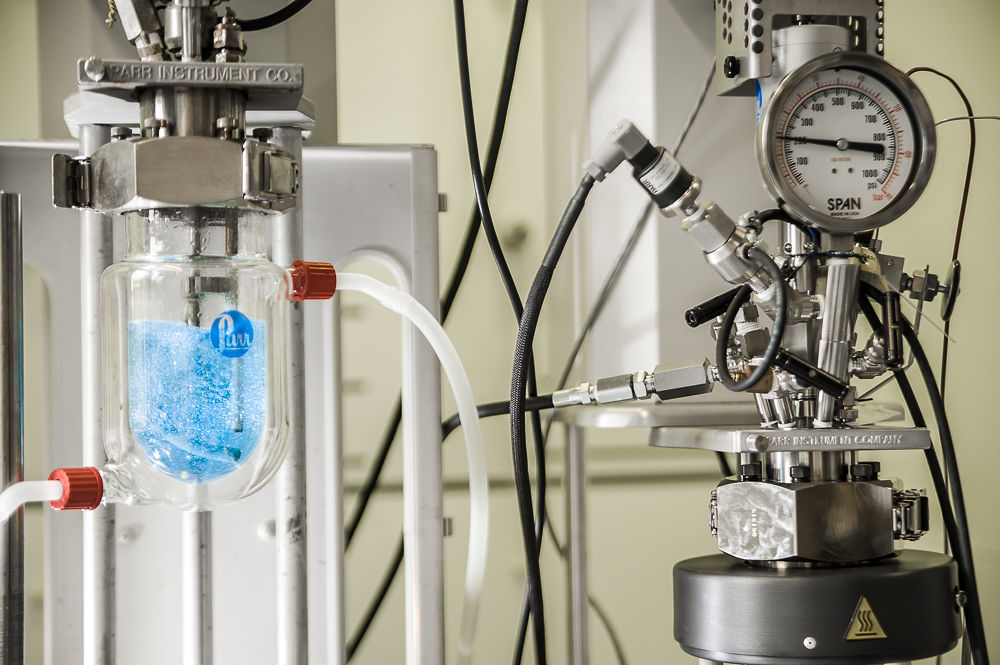- Ruhr-Universität Bochum

Thermal Catalysis: Activity and Selectivity Patterns of Transition Metal Oxides in Different Oxidation Reactions
Alcohols such as 2-propanol and hydrocarbons such as cyclohexene are converted in discontinuously operated batch reactors in project A1 of CRC/TRR 247. Oxidizing agents are tert-butyl hydroperoxide (TBHP), hydrogen peroxide (H2O2) and oxygen (O2). The application of the latter requires stainless steel autoclaves due to the required high-pressure conditions because of the limited solubility of O2 in water. TBHP is usually applied in organic solvents such as acetonitrile. The figure above shows typical reactors operated under atmospheric conditions (left) and high-pressure conditions (right).
In these kinetic experiments, conversion and the selectivities to the various products comprising ketones, acids, peroxides, or epoxides are determined as a function of the process conditions, allowing us to derive rate laws. Mechanistic studies additionally apply in situ methods such as ATR-IR spectroscopy to identify reaction intermediates.
